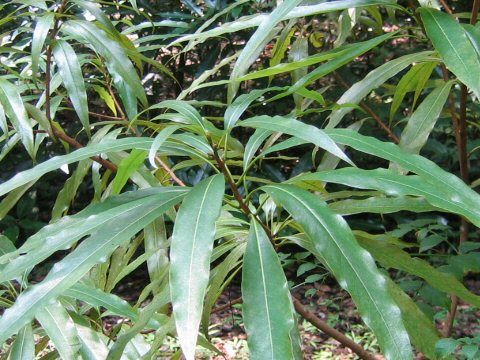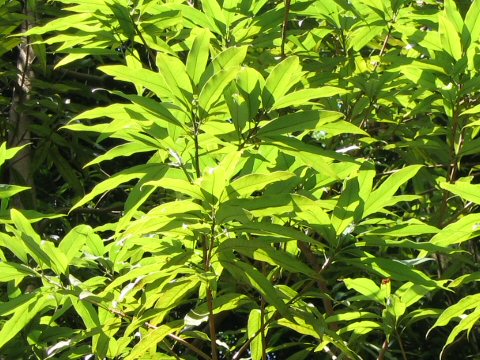
|
The "Baribari-no-ki" (Litsea acuminata) belongs to Lauraceae (the Laurel family). It is a tall evergreen tree that is distributed from the southern Kanto region of Honshu west to Shikoku, Kyushu, and the Nansei Islands in Japan. It grows sparsely in broad-leaved forests and grows up to 15 m high. The leaves are lanceolate and thinly leathery with sharply pointed tips, and grow in alternate clusters at the tops of the branches. The fruits ripen to blackish purple the following June. Some say that the Japanese name comes from the sound made when the stiff leaves touch each other, or from the high oil content of the branches and leaves, which burns well. It is also known in Japan as "aokago-no-ki" (meaning "blue deer tree").
|



